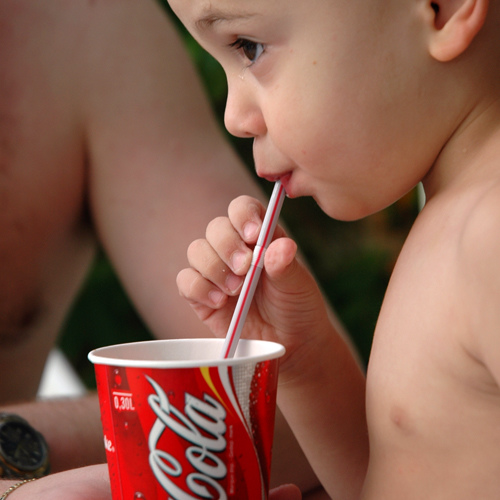Latino kids consume more soft drinks, fruit-flavored drinks, and other sugary drinks on average than do their White peers.
Sugary drink consumption contributes to increased rates of obesity and diabetes, studies show.
Raising the price of sugary drinks could reduce consumption among Latino kids, and potentially improve weight outcomes, according to a new package of research materials produced jointly by Salud America! and Bridging the Gap, two national research programs funded by the Robert Wood Johnson Foundation (RWJF).
The new Sugary Drinks & Latino Kids research materials start with an in-depth review of the latest science on sugary drink consumption by Latino kids and how pricing strategies could influence such consumption. The materials also provide policy implications based on that research.
Data shows that Latino kids have increased consumption of sugary drinks from 1991 to 2008.
By age 2, 74 percent of Latino kids have had a sugary drink (vs. 45 percent of White kids).
By high school, 22 percent of Latino kids have three or more sugary drinks a day (vs. 16% of White kids).
Strategies to alter sugary drink prices—such as sugary drink taxes, exclusion of sugary drinks from food assistance programs, and subsidization of healthier beverages—have been suggested to reduce sugary drink consumption.
“One study found that higher sugary drink prices were linked to lower body weight in school children, with a greater impact on Latino kids,” said Amelie G. Ramirez, director of Salud America!, a national network of stakeholders seeking research and environmental solutions to Latino obesity, based at the Institute for Health Promotion Research at the UT Health Science Center at San Antonio.
Sugary drink taxes, for example, have been proposed in several areas, with many proposals earmarking new revenues for obesity-prevention and other health-promotion efforts.
While projections about the effects of such a tax vary, much research concludes that a tax higher than current sales tax rates would have some impact on consumption of sugary drinks.
For instance, one study found that a penny-per-ounce tax (i.e., about a 20 percent price increase if fully passed on to consumers) would decrease sugary drink consumption by up to 24 percent, which, researchers predict, would decrease obesity and diabetes rates.
“It is important for public health to limit the amount of added sugar consumed by Latino youths, given the impact of this added sugar on obesity, diabetes, liver disease, and cardiovascular disease now and into the future,” said Dr. Frank Chaloupka, distinguished professor of economics and public health at the University of Illinois at Chicago and project director for Bridging the Gap.
The new research package is the sixth of six new research material packages by Salud America!, each of which focused on a specific topic on Latino childhood obesity.
Download all the packages at www.salud-america.org.



